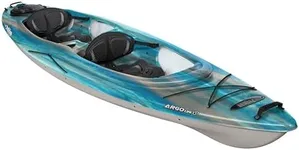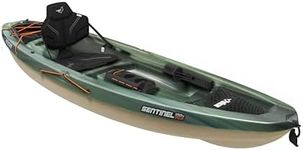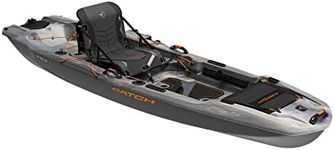Buying Guide for the Best Recreational Kayaks
Choosing a recreational kayak is all about matching the boat to your intended use, comfort level, and the type of water you'll be paddling on. Recreational kayaks are designed for casual paddling on calm waters like lakes, slow-moving rivers, and sheltered coastal areas. When shopping, focus on how the kayak feels, how easy it is to handle, and whether it suits your storage and transport needs. Think about your own size, strength, and paddling experience, as these will help you find a kayak that feels stable and enjoyable to use.LengthThe length of a recreational kayak affects its speed, tracking (how straight it goes), and maneuverability. Shorter kayaks (around 8-10 feet) are easier to turn and handle, making them great for beginners or those paddling in small lakes and rivers. Longer kayaks (11-13 feet) track better and glide more efficiently, which is helpful if you plan to paddle longer distances. To pick the right length, consider where you'll use the kayak most often and whether you value easy turning or better straight-line paddling.
WidthWidth, or beam, is the measurement across the widest part of the kayak. Wider kayaks (over 28 inches) are more stable and less likely to tip, which is reassuring for new paddlers or those who want a relaxed experience. Narrower kayaks are a bit faster and easier to paddle over long distances but can feel less stable. If you’re new to kayaking or want a kayak for calm, leisurely outings, a wider kayak is usually the best choice.
Weight CapacityWeight capacity tells you the maximum combined weight of the paddler and any gear the kayak can safely carry. It’s important because overloading a kayak can make it unstable and harder to paddle. When looking at this spec, add up your weight plus any gear or supplies you’ll bring. Choose a kayak with a capacity that’s at least 20-30% higher than your total to ensure good performance and safety.
Cockpit SizeThe cockpit is the opening where you sit. Larger cockpits make it easier to get in and out and feel less confining, which is great for beginners or those who want to paddle with kids or pets. Smaller cockpits offer more control and protection from splashes but can feel snug. Think about your comfort and how easy you want entry and exit to be when choosing cockpit size.
Weight of the KayakThe weight of the kayak affects how easy it is to carry, load onto a car, and move to and from the water. Lighter kayaks are easier to handle alone, while heavier ones may be more durable but require help to transport. Consider your own strength and whether you’ll have help when moving the kayak. If you’ll be paddling solo often, a lighter kayak can make your experience much easier.
MaterialRecreational kayaks are usually made from plastic (polyethylene), composite materials, or sometimes inflatable materials. Plastic kayaks are durable and affordable but heavier. Composite kayaks are lighter and more efficient in the water but can be more fragile. Inflatable kayaks are easy to store and transport but may not perform as well as hard-shell models. Choose the material based on how you’ll store and transport the kayak, and how much durability or performance you need.
Seat Comfort and AdjustabilityA comfortable, adjustable seat can make a big difference, especially on longer paddles. Look for seats with good padding and back support, and check if they can be adjusted to fit your body. If you plan to spend a lot of time in your kayak, prioritize comfort to avoid fatigue and back pain.

















